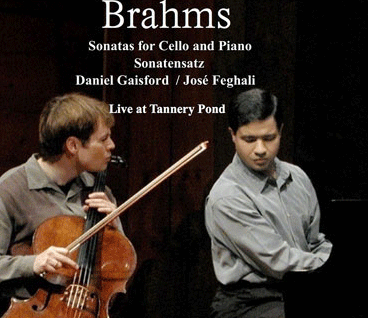In the Cello Sonata, passion rules, fiery to the point of vehemence, now defiantly challenging, now painfully lamenting…How boldly the first Allegro theme begins, how stormily the Allegro flows! It is true that the passion subsides into quiet mourning in the Adagio and fades away, reconciled, in the finale. But the beating pulse of the earlier sections still reverberates, and pathos remains the determining psychological characteristic of the whole.
That’s how critic Eduard Hanslick described Johannes Brahms’ Cello Sonata No. 2 in F major, Op. 99, following the work’s premier in 1886. Hanslick was nineteenth century Vienna’s most powerful music critic and an ardent champion of Brahms’ music. He presided over a politically charged environment in which Vienna was divided into two passionate musical camps: those who supported Brahms versus those who supported Wagner. Hugo Wolf, a devout Wagnerian wrote his own review of the Second Cello Sonata in the Wiener Salonblatt:
What is music, today, what is harmony, what is melody, what is rhythm, what is form, if this tohuwabohu [total chaos] is seriously accepted as music? If, however, Herr Dr Johannes Brahms is set on mystifying his worshippers with this newest work, if he is out to have some fun with their brainless veneration, then that is something else again, and we admire in Herr Brahms the greatest charlatan of this century and of all centuries to come.
Today, it’s the enduring greatness of the music that matters, not the politics. Brahms wrote the Second Cello Sonata near Lake Thun in Switzerland during the summer of 1886. It was a productive summer which also saw the completion of the Violin Sonata in A major, Op. 100 and the Piano Trio in C minor, Op. 101. The Second Cello Sonata was dedicated to Robert Hausmann, who would later premier Brahms’ Double Concerto with violinist Joseph Joachim.
From the opening of the first movement, Brahms’ trademark asymmetrical phrases and other elements of rhythmic complexity keep us feeling off balance. The music evolves and takes shape through intensely concentrated motivic development. There’s also a heroic sense of struggle between the cello and piano. A less than skilled cellist once played this piece with Brahms and complained that she couldn’t hear herself over the thick piano scoring. “You were lucky.” was Brahms’ sarcastic response.
Here is an electrifying live concert recording of Brahms’ Second Cello Sonata featuring American cellist Daniel Gaisford and the late Brazilian pianist and 1985 Van Cliburn Competition Gold Medalist José Feghali:
[ordered_list style=”decimal”]
- Allegro vivace 0:00
- Adagio affettuoso 9:59
- Allegro passionato 17:48
- Allegro molto 25:11
[/ordered_list]
https://www.youtube.com/watch?v=1BTIAt1f16Y
[unordered_list style=”tick”]
[/unordered_list]


